PEG/PPG-18/18 dimethicone is a type of silicone that is used in hair and skin care products as a co-emulsifier, conditioning agent, and skin protectant.
Origin
PEG/PPG-18/18 dimethicone is a type of silicone. Silicones are synthetic polymers made up of repeating units of siloxane (elemental silicon and oxygen), which is why silicones may also be referred to as polysiloxanes. Often, the terms “silicone” and “silicon” are mistakenly used interchangeably, when they are actually quite different. Silicon is the 14th element on the periodic table and the second most abundant element in the earth’s crust, after oxygen. In contrast, silicones are always synthetically produced.
Dimethicone, also known as polydimethylsiloxane, is comprised of organic (carbon-based) groups attached to a linear inorganic backbone of silicon and oxygen. The prefix ‘‘dimeth” refers to the two methyl groups that are attached to the silicone molecule to form dimethicone. Based on this structure, dimethicone is considered to be a hydrophobic (lipid soluble) oil. One way to make dimethicone more water-soluble is by adding multiple units of ethylene glycol and/or propylene glycol to sites along the polymer chain. The oxygen atoms add polarity to the silicone and are readily available for association with water molecules.
Prior to 1999, all silicone compounds that contained polyethylene glycol (PEG) or polypropylene glycol (PPG) groups were classified as “dimethicone copolyols”; the amount of PEG/PPG was not specified. However, in 1999, the INCI rules were changed and required manufacturers to disclose the number of moles of PEG or PPG present in a dimethicone copolyol. Thus, the number associated with the ingredient name (i.e., PEG/PPG-18/18 dimethicone) corresponds to the number of repeat units of PEG, followed by the number of PPG. The greater the number following the PEG/PPG designation, the “heavier” and more complex the molecule.
Functions
Silicones have a long history of use in skin care products, beginning in the 1950s. They are well-known to improve the feel, appearance, and performance of products. Silicones provide an exceptionally desirable skin-feel that is dry and non-greasy, yet silky smooth. They also function as delivery agents for other ingredients, as well as improve product spreadability.
Since PEG/PPG-18/18 dimethicone contains both silicone and water-soluble groups, it can function as a co-emulsifier. Unlike traditional emulsions where the oily ingredients are dispersed as droplets in water, water-in-silicone (w/s) emulsions are droplets of water dispersed in the silicones. W/s emulsions are ideal vehicles for liquid foundations that incorporate silicones with hydrophobic pigments. These formulations have pleasant aesthetics, excellent spreading characteristics, and optimize the film-forming properties of silicones.
PEG/PPG-18/18 dimethicone also functions to condition, lubricate, and protect the skin. The combination of silicone with methyl groups tends to make it extremely resistant to water, yet it keeps them flexible and moving free, ideal properties for a lubricant. Upon application to the skin, PEG/PPG-18/18 dimethicone forms a film on the surface while still allowing skin to “breathe”. Oxygen, nitrogen, and other nutrients can still pass through the film, however, it does not allow water to pass through, which is an ideal quality for preventing dry skin. Furthermore, this film not only prevents water loss, but also protects the skin from penetration of harmful substances, such as irritants and bacteria. Thus, PEG/PPG-18/18 dimethicone can be classified as a skin protectant.
Safety
The safety of dimethicone copolyols, including PEG/PPG-18/18 dimethicone, has been assessed by the Cosmetic Ingredient Review (CIR) Expert Panel. The Panel evaluated the scientific data and concluded that the dimethicone copolyols were safe for use as cosmetic ingredients.
Even though PEG/PPG-18/18 dimethicone is considered to be safe by the CIR Expert Panel, it is often called a “toxic” ingredient that should be avoided. One reason PEG/PPG-18/18 dimethicone has received a bad reputation is due to possibly contamination with 1,4-dioxane. The process of making PEG/PPG-18/18 dimethicone involves ethoxylation, which produces 1,4-dioxane as a byproduct. According to the National Toxicology Program, “1,4-dioxane is reasonably anticipated to be a human carcinogen.”
There are also claims that silicones can cause or worsen skin concerns, cause sensitization, and “suffocate” skin. However, these claims have not been proven in any published research. It is not biologically possible for silicones to cause or worsen skin concerns or cause sensitization because their large molecular size prevents them from being absorbed into the skin. If a substance cannot penetrate the skin, it cannot react with cells of the immune system.
References: Cosmetics and Toiletries, “Bis-PEG vs. PEG dimethicone”, 2008, Naturally Curly, “Water Soluble Silicones 101”, 2012, Cosmetics & Toiletries, “Silicones’ Benefits in Anti Aging Skin Care”, 2008, Cosmetic Ingredient Review, “Safety Assessment of Dimethicone Crosspolymers as Used in Cosmetics”, 2012.







